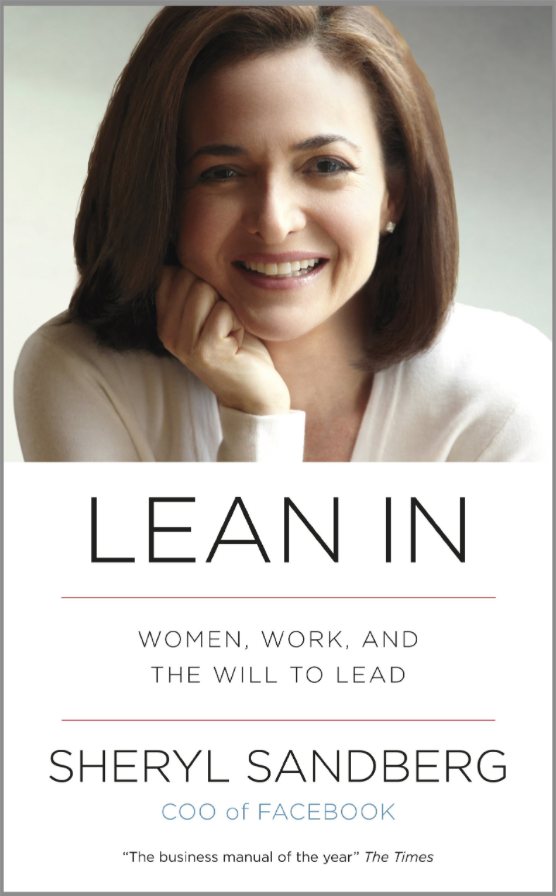In the almost six years since Sheryl Sandberg‘s bestselling book Lean In was released, a lot has changed, and not much has changed at all. The book has sold over 4.2 million copies worldwide and spurred Sandberg to found LeanIn.org — a non-profit organization whose aim is to “help women achieve their ambitions and work to create an equal world.” Which sounds like a laudable goal, no?
Yet in 2018 (the last year for which numbers are available), women are still woefully underrepresented in upper level corporate management positions, and only hold 4.2% of the CEO positions at the helm of Fortune500 companies. Perhaps even more disheartening, the Global Gender Gap Report released at the end of 2018 by the World Economic Forum suggests that at the current rate of growth, it will take women 212 years to reach economic parity with their male counterparts. Ouch.
It’s obvious that we need change and we need it as quickly as possible.
To be sure, there’s been a lot of cultural commentary about Lean In– with as many different opinions as one would expect to garner from a Google search.
Supporters often praise Sandberg’s advice, for instance, to be unapologetically ambitious; or her detailed analysis of how (and why) to negotiate. Hard skills that many women felt culturally dissuaded from having and using. The Lean In web site touts more than 41,000 Lean In mentoring “Circles” worldwide, many supporters who continue to credit the book with their career successes, and a cultural cache that make it still discussion-worthy. Case in point: recently the NPR talk show On Point featured an hour long discussion of the book and its principles during which the host Meghna Chakrabarti noted that the show’s phone lines were unusually busy.
However, critics have noted that, although Sandberg notes that there are cultural, economic, and systemic modes of women’s oppression, the Lean In notion of remedying such inequalities solely by changing women’s behavior is problematic at best, and harmful at worst. Much of this is typified by journalist Katherine Goldstein‘s article, “I was a Sheryl Sandberg superfan. Then her ‘Lean In’ advice failed me.”
Goldstein notes that when she became a mother, “not only did my Lean In devotion not prepare me for the challenges I faced in the coming years as a new mom, its rose-colored doctrine also supplied me with plenty of damaging illusions.” Even former First Lady Michelle Obama, speaking candidly in her new bestselling memoir, weighed in, saying, “It’s not always enough to lean in, because that s— doesn’t work all the time.”
We know that Lean In has supporters and detractors, and that the topic is of such interested and import, that it appears to not be going away any time soon. The question that remains is whether the solutions Lean In posits actually help make change. And if so, are we sure that it is net positive?
It’s one thing to read the volley of think pieces, quite another to have data and an empirical approach to try and qualify and quantify the effect and effectiveness of the Lean In approach on women and men in the workplace, especially given the little to no gain we see in key indicators of women’s advancement.
Some enterprising researchers set out to do just that, and published the results of their study at the end of 2018 in the Journal of Personality and Social Psychology.
Professors Grainne Fitzsimons and Aaron Kay of Duke University’s Fuqua School of Business and Department of Psychology & Neuroscience, Along with Ph.D. student Jae Yun Kim, designed experiments and recruited over 2000 participants to test out what (if anything) Lean In added to women’s empowerment, and at what cost.
“Fitzsimons, a psychologist who studies motivation, said the lean in idea is popular because it speaks of potential rather than failure, and appeals to western ideas about the power of the individual.
‘But the downside is that it can lead to perceptions that it’s women’s responsibility to solve the problem, and that they contributed to the problem,’ she said. ‘These kinds of messages can lead to a loss of support for structural changes that can address it more widely.'” —The Unintended Effects of Lean In
The samples in their studies provided strong support for the notion that Lean In is a double-edged sword: it’s a form of empowerment which also, unfortunately, causes people to be, “…also significantly more likely to believe it is the responsibility of women to solve the problem, and that women caused the problem in the first place. This was true even if they also read about the structural problems women face at work.”
The point of empowering women to unabashedly follow their ambition should obviously not come at the cost of understanding that acting on ambitions alone will not solve the problem of gender inequality in the workplace or the home. The verdict? With Lean In, it appears the remedy may be just as problematic as the disease it’s trying to address.
Which is not to say that Lean In is completely without value, it’s just to say that the value of Lean In is not complete. It’s not a panacea, and should be understood as such.
Maybe it’s time to try Leaning Back?

